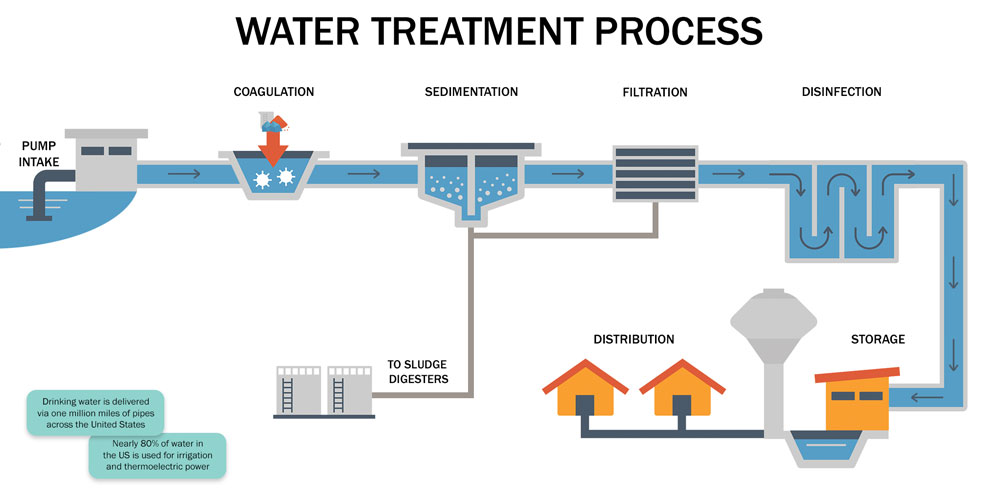Optimized water treatment polymer application improves efficiency in purification systems.
Optimized water treatment polymer application improves efficiency in purification systems.
Blog Article
Discover Just How Water Treatment Polymer Functions to Improve Your Water Purification Refine
Water treatment polymers have arised as important agents in the world of water purification, operating as both flocculants and coagulants to substantially enhance the elimination of contaminants. By promoting bit aggregation and enhancing sedimentation efficiency, these substances not only improve water top quality however also enhance operational procedures. As we explore the complex mechanisms behind their efficiency, the implications for both environmental sustainability and price reduction come to be increasingly evident. What specific types of polymers exist, and just how do they tailor their actions to numerous purification systems?
What Are Water Treatment Polymers?
Water treatment polymers are specialized chemical substances employed in various processes to improve the effectiveness of water purification and therapy systems. These polymers play an important function in the elimination of impurities, consisting of suspended solids, organic matter, and microorganisms from water resources. They are commonly categorized into natural, synthetic, and semi-synthetic polymers, each with distinct characteristics and applications.

Water therapy polymers function as flocculants, coagulants, or dispersants, promoting the agglomeration of particulates for less complicated elimination. Their effectiveness can significantly minimize the cost and power connected with traditional therapy techniques, making them essential parts in community and commercial water treatment centers. As water high quality laws end up being more rigid, the demand for efficient water treatment polymers remains to expand, highlighting their relevance in contemporary water monitoring methods.
Device of Action
The system of activity of water treatment polymers entails a number of key procedures that enhance the elimination of contaminants from water. Mostly, these polymers serve as flocculants, advertising the aggregation of put on hold particles into bigger clusters understood as flocs - water treatment polymer. This gathering occurs through charge neutralization, where the cationic polymers communicate with negatively charged fragments, minimizing their electrostatic repulsion and allowing them to coalesce
When flocs are created, their enhanced dimension and weight promote sedimentation or filtration, therefore successfully eliminating them from the water column. Additionally, some polymers may display adsorptive homes, binding to details contaminants and improving their removal effectiveness. This twin activity not just boosts the physical separation of particles but likewise aids in the reduction of dissolved natural issue and hefty steels.

Sorts Of Water Therapy Polymers
Countless kinds of water therapy polymers are utilized in various applications to boost the effectiveness of pollutant removal procedures. These polymers can be extensively categorized right into 3 primary types: flocculants, coagulants, and dispersants.

Coagulants, on the various other hand, are usually low-molecular-weight substances that reduce see this the effects of the cost of colloidal bits. They advertise the formation of larger accumulations, which can then be eliminated more quickly. Usual coagulants include aluminum sulfate and ferric chloride, usually used in combination with flocculants to enhance general performance.
Dispersants serve a various purpose; they support bits in suspension, stopping them from agglomerating. This is particularly crucial in applications such as oil-water separation, where it is necessary to keep contaminants spread until they can be properly removed.
The selection of the appropriate polymer kind relies on the details attributes of the water being treated and the desired high quality of the last effluent.
Advantages of Making Use Of Polymers
Polymers play an essential role in enhancing the efficacy of water therapy procedures, using a variety of advantages that contribute to improved functional efficiency. Among the key advantages of utilizing polymers anchor is their ability to considerably increase the performance of fragment removal during coagulation and flocculation. By advertising quicker and a lot more efficient aggregation of fragments, polymers assist in the information of water, leading to greater top quality outcome.
Additionally, polymers can boost the sedimentation process, resulting in lowered sludge volumes. This not just reduces disposal costs yet likewise minimizes the ecological effect related to waste monitoring. Furthermore, making use of water therapy polymers can lead to boosted filtering prices, allowing for much more reliable use of sources and minimized functional downtime.
Furthermore, polymers aid in maintaining the water chemistry, look at this web-site which can reduce concerns related to scaling and deterioration in treatment systems. This stabilization adds to the longevity and dependability of tools, ultimately lowering maintenance expenses. Last but not least, the convenience of polymers enables their application throughout various water treatment situations, making them important tools for attaining regulatory compliance and making sure public wellness safety.
Applications in Water Purification

Water filtration processes utilize a selection of polymers to enhance treatment efficacy and make sure the removal of impurities. These polymers play vital roles in coagulation, flocculation, and sedimentation, effectively accumulating suspended fragments and facilitating their elimination from water. Coagulants, such as polyaluminum chloride, engage with impurities, neutralizing their charges and promoting the development of bigger accumulations, recognized as flocs.
Along with standard coagulants, specialty polymers are employed in membrane purification systems. These polymers boost membrane layer performance by decreasing fouling and extending functional life-span. Polymeric adsorbents are used to target specific impurities, consisting of heavy steels and natural compounds, giving a customized approach to water therapy.
Polymers likewise find applications in sludge dewatering procedures, improving the efficiency of solid-liquid splitting up - water treatment polymer. By enhancing the dewatering features of sludge, these polymers minimize disposal costs and ecological influence
Final Thought
In conclusion, water treatment polymers play a critical role in boosting water purification processes by acting as efficient flocculants and coagulants. Generally, the unification of these specialized compounds is vital for maximizing water treatment systems and making sure reliable purification outcomes.
Report this page